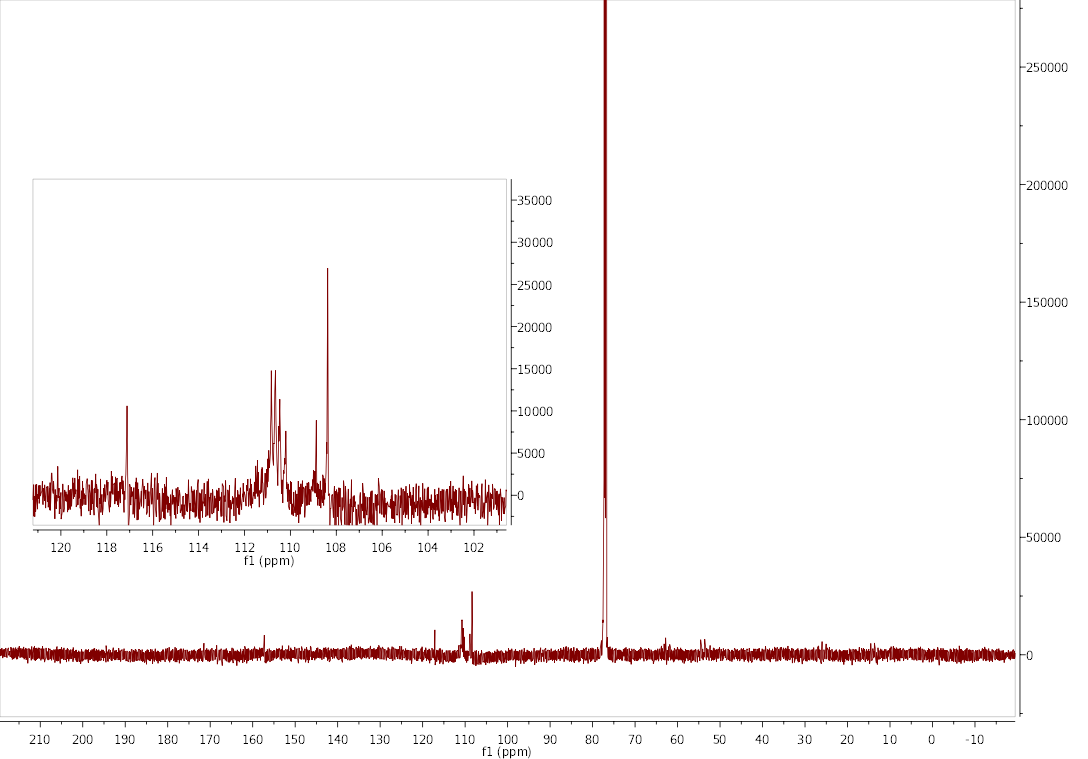when the carbon with full fluorine, the 13C spectrum with 1H decouple will be difficult to see the peak, like following:

the 13C spectrum with 1H decouple as follow:

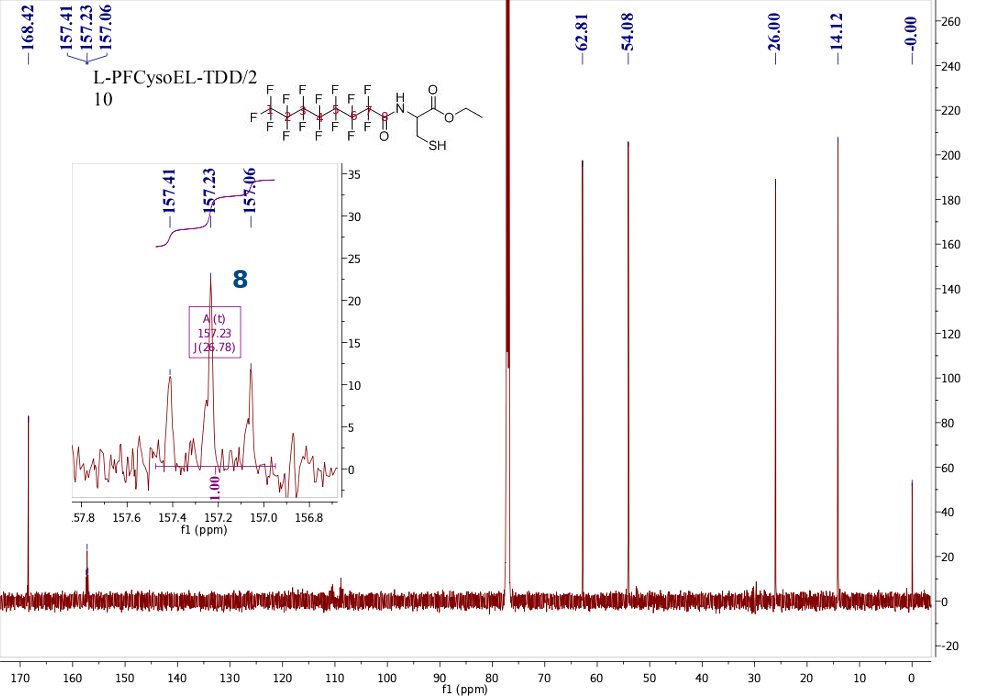
Instrument: alone channel for acquired 19F, other than 13C. for example BBF&O, the 1H channel can tune to 19F, and using the BB channel for 13C.
Experiment: rpar C13CPD, and change the decouple channel 1H to 19F, using the walt16/CPD decouple pulse. because the 19F spectrum is so borld, you must set the CPD 90 deg pulse to shorter, I set to 40 us, and second CPD to 60us. and set the O2P close to the favor spectrum.

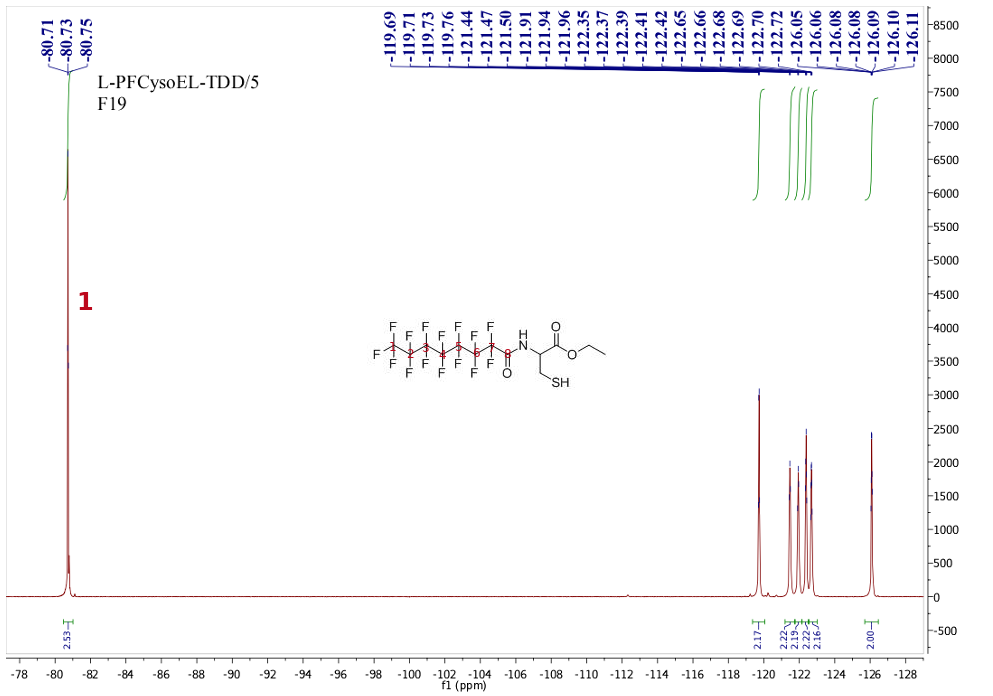
from this 19F spectrum, we known there are two group peaks in -80 ppm and -120~-128 ppm.
when you set the O2P to -100ppm, this value isnot suite, the decouple is not working.

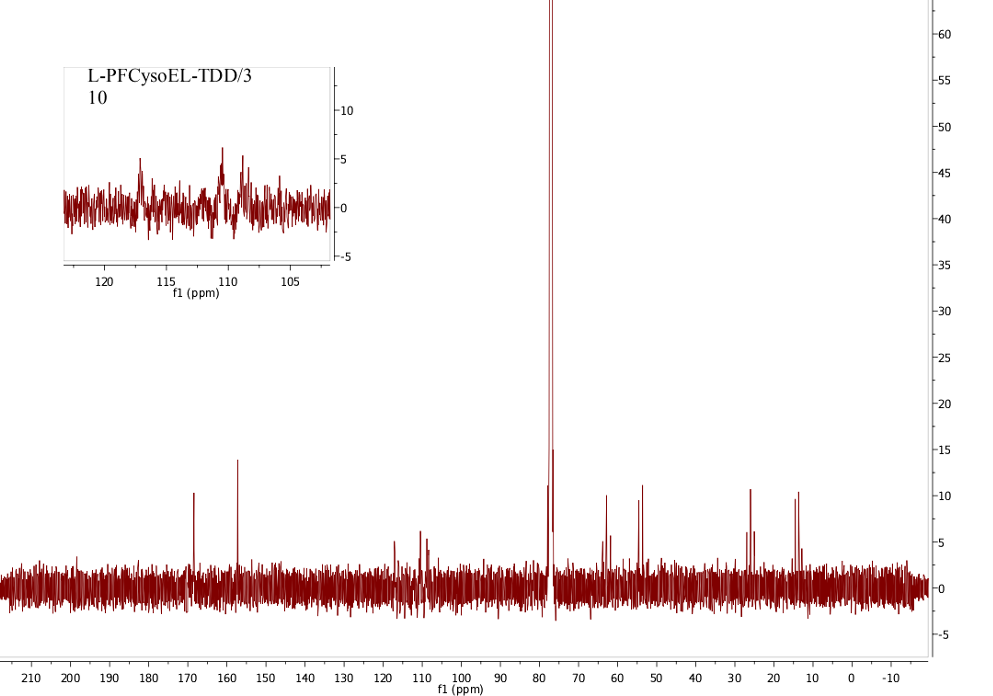
when set the O2P to -122 ppm, the decouple working for this group carbon with fluorine. But there only 6 carbon, and 108.36 peaks are doublet peak, maybe this peak is splite by the CF3 (-80 ppm), whick not cover by this decouple pulse.

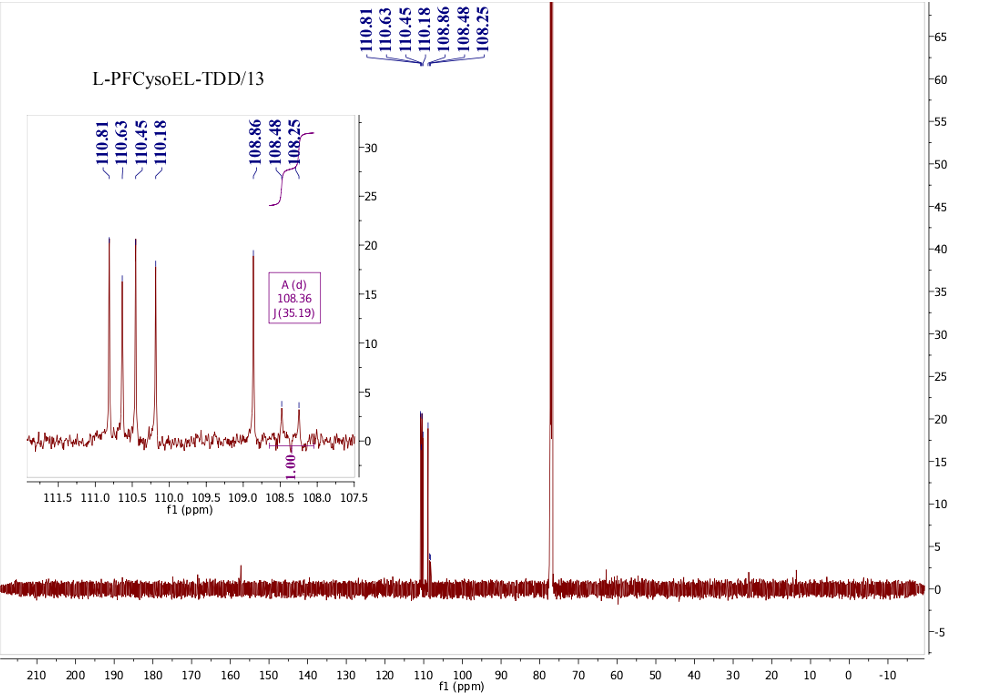
So set the O2P to -80 ppm, we will see the other peak in -117.11 ppm, and that is triple peaks, maybe effect by CF2.


wlatz-16 is composite pulse decoupling techniques, and its effective decoupling bandwidth is
, it's not suite for large chemical shift ranges like as 19F. so 40us 90 deg has ~22 ppm covering range, and 60us 90 deg only has ~14 ppm for 19F. Now we konw why the decouple can not cover the 50 ppm (-80~-130 ppm) in F19 spectrum.
change the CPD to broadband decoupling as GARP, this effective decoupling bandwidth is
, the decoupled covering range are ~55 ppm and 37 ppm when the 90 deg set to 40 us and 60 us. This parameters are suite for the 13C decouple 19F from -80 to -130 ppm. and set O2P to -100ppm.

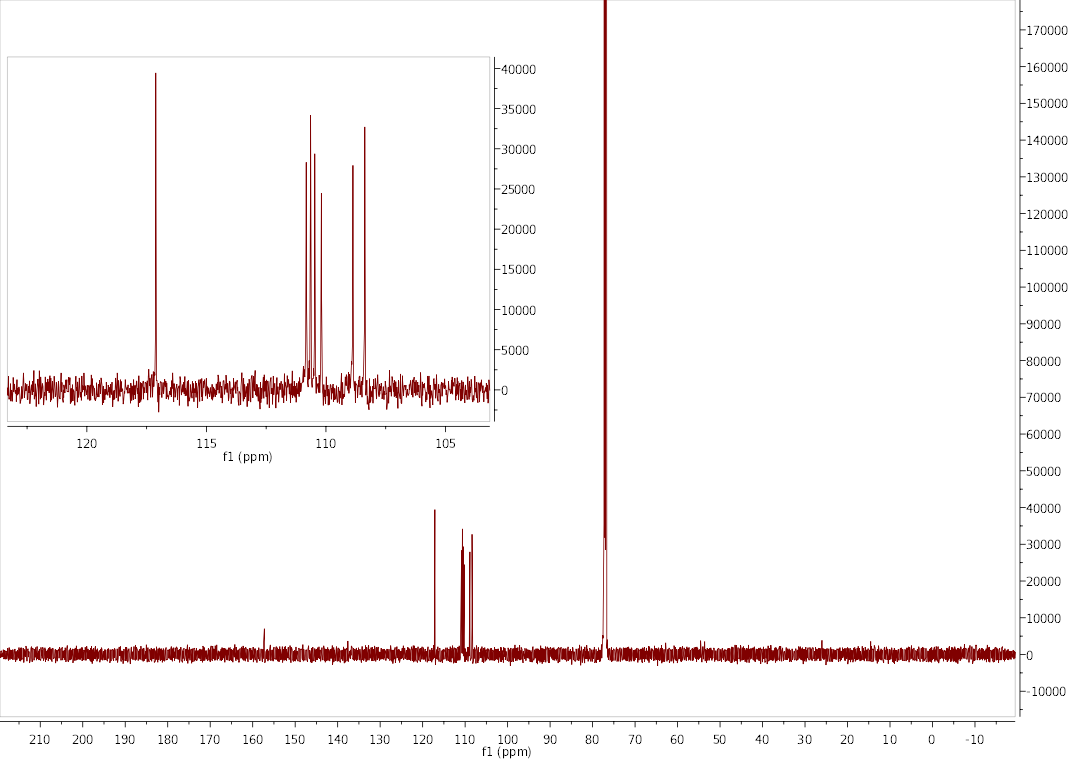
If you only set the 90 deg to 60 us and 100 us, that also are not suite for this expriment, the decoupled is not full.
